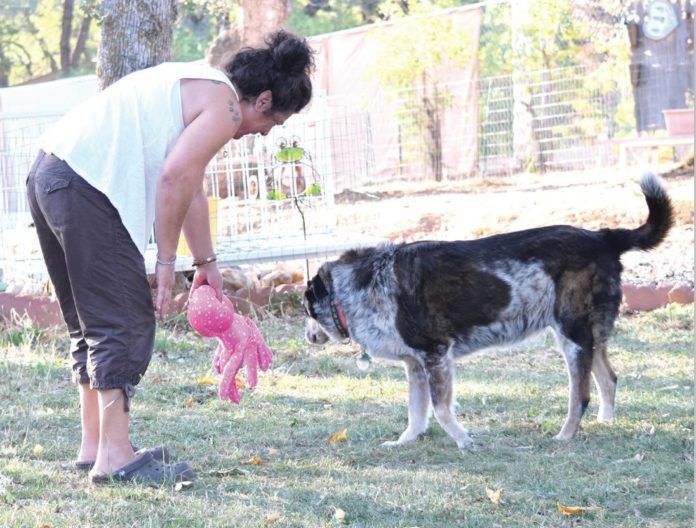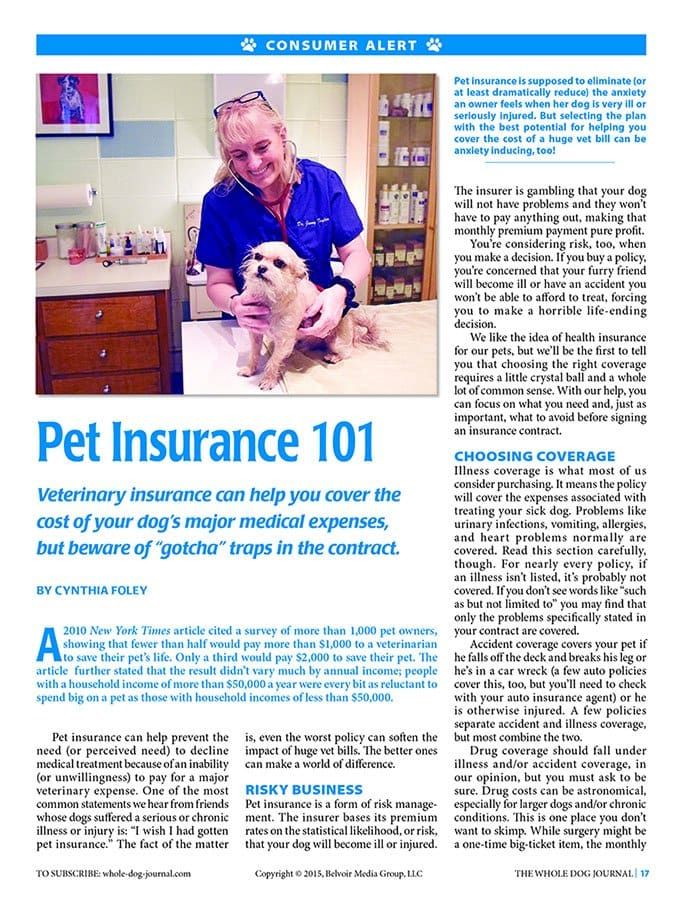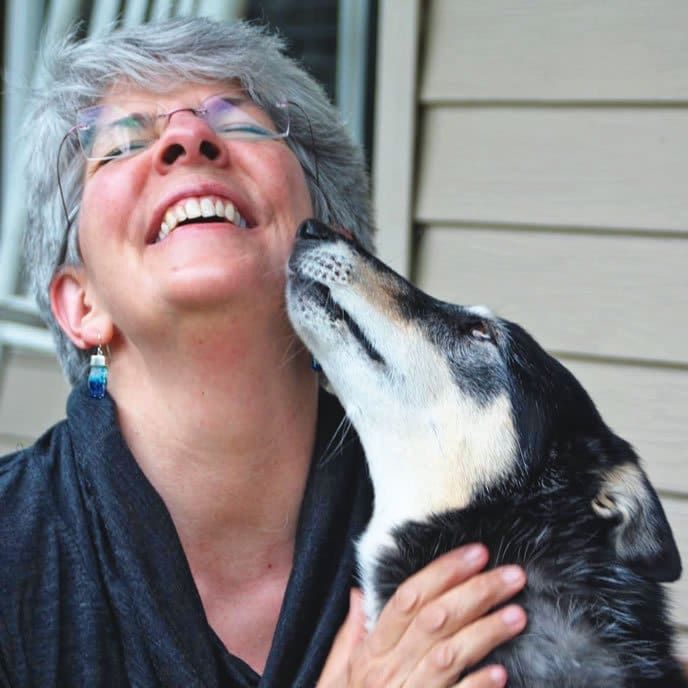Jack wags his tail and runs over to welcome me, eagerly giving kisses. “Hi, Jack,” I say and reach down to pet his big brown head. Jack is a very friendly 9-year-old Rhodesian Ridgeback with arthritis. “How are you feeling today?” I ask him and he grins in response, then turns and walks over to his dog bed. As he walks I watch him and see a bit of stiffness in his left rear leg. My eyes travel up to his back and then over to his right shoulder. I know that a stiff leg affects his entire body, especially his lower back and right shoulder, which will compensate for the left rear weakness. He lays down on his bed, turns over on his side and sighs. He’s ready for his weekly massage from me – his canine massage therapist.
Massage, for dogs? Yes! Dogs, just like humans, usually love a good therapeutic massage. Just like us, they enjoy the relaxation that massage provides and the relief from muscle aches and pains that can come from a day of hard playing, a long hike, or even from just lying around. They don’t know about the benefits they’re receiving, or that they will soon experience a feeling of well-being and rejuvenation. They just know that someone is touching them in a way that takes away pain and feels really good.
Dogs carry about 60 percent of their body weight on their front legs. That means the shoulders work harder than the rest of the body – and that’s why dogs of all ages often experience tight neck and shoulder muscles and can benefit from massage and stretching.
For dogs who are afflicted with arthritis, however, massage plays a particularly therapeutic role, by increasing circulation and breaking up adhesions that tend to form in their connective tissue. Combined with stretching the limbs, massage helps to lengthen constricted muscles, increasing flexibility and mobility. All of this helps decrease inflammation and pain, leaving an arthritic dog feeling much better.
Massage for a Dog’s Arthritis
Arthritis, also known as degenerative arthritis or degenerative joint disease, affects one out of five dogs and makes up 90 percent of all arthritic cases. Arthritis is most common in older dogs, but it can be experienced by dogs of any age. The hallmark trait of the disease is the loss of the smooth cartilage that covers and protects the end of the bones in a movable joint. When cartilage wears away, the bone ends in a joint touch or rub against each other, causing pain and inflammation.
Conditions that can cause Arthritis include the aging process and the everyday wear and tear on joints, trauma that causes bone fracture and/or joint instability, too much weight bearing on the joint, or an excess of repetitive activities. Other factors include developmental or structural conditions like hip or elbow dysplasia, or osteochondritis dessicans, which manifests as a small segment of bone and cartilage that separates from the rest of its surroundings. Anything that upsets the stability of a joint can cause arthritis.
Despite the variable beginnings of Arthritis, the end result always leads to a disruption of normal joint function. Arthritis affects the entire joint, including the cartilage (which surrounds the ends of the long bones and acts as a shock absorber), the synovial fluid and membrane (which lubricates the ends of the cartilage, providing a near frictionless environment), the ligaments and surrounding muscles (which stabilize the joint), and the bones themselves (which house the entire framework). Arthritis can cause the dog to experience joint pain, tenderness, limited mobility, perhaps some swelling, and varying degrees of inflammation. The severe discomfort caused by Arthritis can also depress your dog’s appetite and spirit.
If you notice your dog limping, bunny hopping, having difficulty rising, going up the stairs, or getting into the car, or notice a decrease in stamina and early fatigue with exercise, you should consider a visit to the vet to obtain a definitive diagnosis. An x-ray will show any cartilage or bone changes.
Keep in mind that dogs are stoic in nature and won’t always let you know when they’re experiencing discomfort. It will be up to you to notice any stiffness or limping that your dog may exhibit. He may also obsessively lick affected limbs.
If your veterinarian diagnoses Arthritis, begin treatment as soon as possible. The sooner treatment is initiated, the more you can do to slow down or stop the arthritic progression. Once the cartilage is damaged, the changes are permanent, but there are still a lot of helpful therapies that will help your furry friend feel better (see sidebar, right). As a massage therapist, of course, my favorite treatment for an arthritic dog is massage!
Finding a Massage Therapist for Your Dog
To find a massage therapist for your dog, start by asking your holistic veterinarian if she works with a particular massage practitioner or knows one that she could recommend. Today, many veterinary sports medicine or physical rehabilitation clinics have massage therapists on staff, or can refer you to practitioners with whom they share a professional relationship.
Without a veterinary reference, look for a therapist who has formal training and education in massage and canine anatomy. Ask about the courses the candidate took, how many hours of training were included, and how much professional experience she has. Then, ask for references – and contact some of the people! Long-term clients are good; veterinary references are even better.
Finally, ask if you can observe the therapist working on another client’s dog. The dog should be relaxed and happy during the experience, not anxious, tense, or trying to escape. Never should the dog appear as if the pressure used is painful or uncomfortable.
Dogs who are new to massage may not immediately relax with a therapist, but generally calm down after 10 to 15 minutes. Don’t be surprised if your dog needs to get up and walk around a bit during the massage; any therapist should understand the dog’s need to process the experience and should not attempt to forcibly restrain your dog. Give the therapist and your dog a little time to get to know each other and soon you should see your dog contently getting great, pain-relieving massages.
A Proper Dog Massage
This is how a typical massage session goes for an arthritic canine client:
Jack and I are sitting on his dog beds. Two are pushed together – one for him and one for me. His human has already told me that he’s doing great, which is good to hear. It was just a year ago that Jack could barely walk due to a ruptured disk in his back, which resulted in semi-paralysis and arthritis. With acupuncture, laser therapy, supplements, and a weekly massage, he has recovered and is walking and functioning well.
Calming music fills the air, thanks to my Pandora station, and I’ve mixed some essential oils – a little coconut oil with a few drops of lavender for relaxation, and one called Panaway for achy muscles. I pour a bit of oil into the palms of my hands, rub them together and then lightly spread the scented oil down Jack’s back, my hands traveling on either side of his spine and then down that stiff left leg. I pause over the left leg, my fingers lightly touching to determine where the stiffness is and where it’s coming from.
I lightly massage the tight tissues just above his knee and then follow an especially constricted muscle up his leg and into his hip area. I work lightly, exerting a small amount of pressure through my fingertips to help release some of the tightness. The spot is warm to the touch; a little later I will apply a cold pack to alleviate the heat and inflammation (see sidebar, next page, for information on how cold and hot packs are best utilized in a massage session).
I then bring my hands back up to Jack’s head and now more slowly travel the length of his body, exploring and feeling for any more tight muscles, warm spots, and any tender areas. I watch Jack’s face as my hands move, so I will be able to see from his expression if anything is bothering him. His head will lift, he’ll look back at me, and then I know that he’s feeling a little uncomfortable with the pressure in that spot. Should that happen, I immediately let up on the pressure; if the spot is extremely sensitive and he doesn’t like me touching it at all, I work around the area. Eventually I will be able to move back in very lightly, always watching him to make sure that everything I do is okay with my furry patient. Giving a beneficial massage requires that my patient trusts me and my hands. Massage should never hurt.
After the introductory and exploratory massage strokes, I return to Jack’s head and rest my fingers on his cheeks, where the masseter muscle resides, then begin a circular motion to relax those strong, often tight jaw muscles. From there I slip down into the neck and feel several tight spots in his trapezius muscle – generally a pretty tight place on dogs and humans. I hold my finger over the tight tissue, and allow some pressure. Jack stretches out and relaxes. He’s enjoying his massage.
Jack is almost asleep as I move from stretching his shoulder to running my hands down the thick muscles alongside his spine. I feel another spot that is hot under my fingers, and I pause, resting my fingers there. I smooth out the muscle and then reach for my ice chest full of cold packs. Jack doesn’t even wake up as I open the chest and pull out an ice pack, covering it with a cloth and gently placing it over the hot spot next to Jack’s spine, so it will gradually cool that hot area, reducing inflammation. I’ll leave it there for the next 15 minutes while I massage and carefully stretch his rear leg.
After massaging, stretching, and doing a bit of acupressure, I carefully support his leg while moving it through a passive range-of-motion exercise, an excellent way to keep the limb flexible.
I turn Jack over and massage his other side, finding the right shoulder tighter than the left, as I suspected it would be. I massage and work the tight spots, finally loosening the shoulder. I am able to give it a good stretch, never going too far, always staying within a comfortable range, until I’m satisfied that the shoulder will feel and work better for Jack.
On the lower leg, I gently squeeze the webbing between each toe, and stretch each digit up and down. This stimulates the neural pathways, which send and receive messages from the brain – important for the older dog, all the better to keep the feet and body moving.
I finish by placing a hand on Jack’s head and one on his rear, completing our time with some light energy work. “Okay, that’s your massage,” I whisper and Jack opens his eyes and slowly stands up. I put his collar back on and he meanders out to find his person; by the time I leave, he’ll be curled up sleeping. I’m happy to have helped Jack. I know that I have relieved him of stress and discomfort. I know that the massage is helping to keep him flexible and mobile and I know that by next week he’ll be eagerly looking forward to his next massage therapy treatment.
Paulette Jolliffe is certified in human and canine massage and works as a vet tech for Healing Touch, a holistic veterinary clinic in Sherman Oaks, CA. Jolliffe spent decades massaging humans before switching to providing massage to domestic animals five years ago.
















